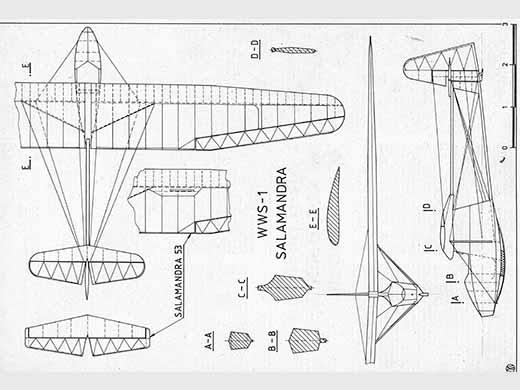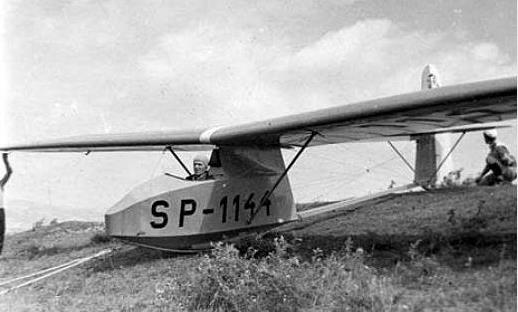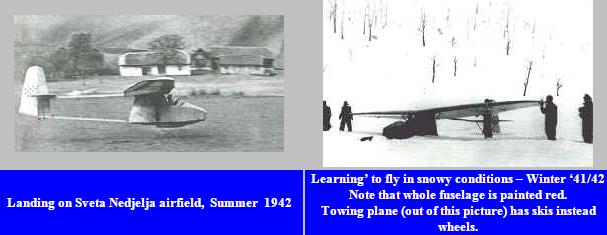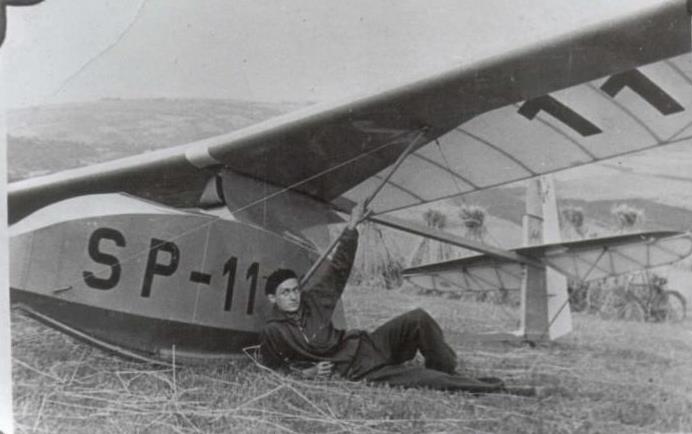| Type |
Single seat glider |
| Dimensions |
Length 6,45 m , height 2,3 m , span 12,5 m, wing area 16,90 m2 , aspect ratio 9,2, profile G-378 |
| Weights |
Empty 110 kg, loaded , max. weight 190 kg |
| Performance |
Max.. speed 150 km/h, stall speed 38,5 km/h, min. sink 0,81 m/sec. at 48 km/h, gliding ratio 15,2 at 56 km/h |
| Type |
Werk.Nr |
Registration |
History |
|
|
|
|
|
|
|
|
About Salamandra
The WWS-1 Salamandra was originally Polish design. Until now, it’s not clear where they came from to Croatia. There are two possibilities – they may be captured ex-Yugoslav gliders, bought direct from Poland, or supplied by Germans after occupation of Poland. However, totally some 20 of them served in Croatian air force,
most of them in Sveta Nedjelja Air school. They’re used for primary gliding lessons, towing by plane, or winch. They were so simple, that even instrument panel was omitted. Interior was spartan - the stick, the seat and rudder pedals. Construction was wood, with fabric cover. Leading edge of wings, and stabilzators were planked wood . The whole construction was strengthened with steel wires.
As the head of the W.W.S. ( Wojskowe Warsztaty Szybowcowe) Wacław Czerwiński designed the W.W.S. 1 Salamander during the mid-1930s. The excellent handling properties, ideal for the solo training methods then in use, led to mass production in various workshops throughout Poland. Production in Poland resumed after WWII with a re-engineered version from the IS (Instytucie Szybownictwa – gliding institute).
Construction of the Salamandra was entirely of wood with fabric covering on wings and tail unit. The fuselage consisted of a plywood covered nacelle for the single seat cockpit, with a wire-braced open strut rear fuselage supporting the cruciform style tail-unit. The high mounted wire braced wings were supported by struts from the bottom of the fuselage to approx 1/5 span. Later versions introduced windscreens and airbrakes in the wings. Wooden skids under the tail and fuselage nacelle comprised the undercariage.
The most notable feat by a W.W.S. 1 Salamandra, in Poland, was an 11hr 15min flight by Buraka, between Brasław and Wilna, on22 Aug 1938. Another marathon flight of 23 hours took place in Romania with a licence built version piloted by G. Braescu.
Post war production continued in Poland, China and Yugoslavia, with improvements such as windscreens and airbrakes introduced in later versions. After migrating to Canada as a refugee Czerwiński designed a modified Salamandra as the Czerwiński Sparrow, as well as an improved Sparrow designated Czerwiński Robin.
WWS ist eine Abkürzung von "Wojskowe Warsztaty Szybowcowe" (Militärische Segelflugwerkstätten) in Krakow. In den 1935 gegründeten Werkstätten hat der Ing. Waclaw Czerwinski die Betriebsleitung übernommen. Das Projekt WWS-1 "Salamandra" wurde das erste Projekt das unter seiner Leitung entstand. Der "Salamandra" war ein Trainingssegler, der hervorragende Flugeigenschaften hatte, so daß sehr schnell entschieden wurde den Segler in die Serienfertigung zu übernehmen. In recht kurzer Zeit hat man in 2 polnischen Segelflugwerken über 150 Exemplare hergestellt. Vor dem Krieg ist die "Salamandra" auch auf Lizenz in Jugoslawien gebaut worden. Nach dem Ausbruch des Krieges sind mehrere Exemplare in die deutsche- und 4 Exemplare aus dem Bestand des polnischen Aeroclubs in Lwow in sowjetische Hände gelangt. Ab 1943 war die "Salamandra" auch in Rumänien produziert worden. Auf Basis von einem vor den Deutschen versteckten Exemplar ist nach dem Krieg die technische Dokumentation rekonstruiert worden und die Produktion ist im Werk Bielsko und Werk Warszawa unter der Bezeichnung IS-A "Salamandra" wieder aufgenommen worden. In den 50er Jahren ist die "Salamandra" auch in China gebaut worden, wo auch eine zweisitzige Version entstand. Auf der ganzen Welt sind insgesamt ca. 500 "Salamandra" gebaut worden.


After the outbreak of war, gliders were taken away by the Germans




